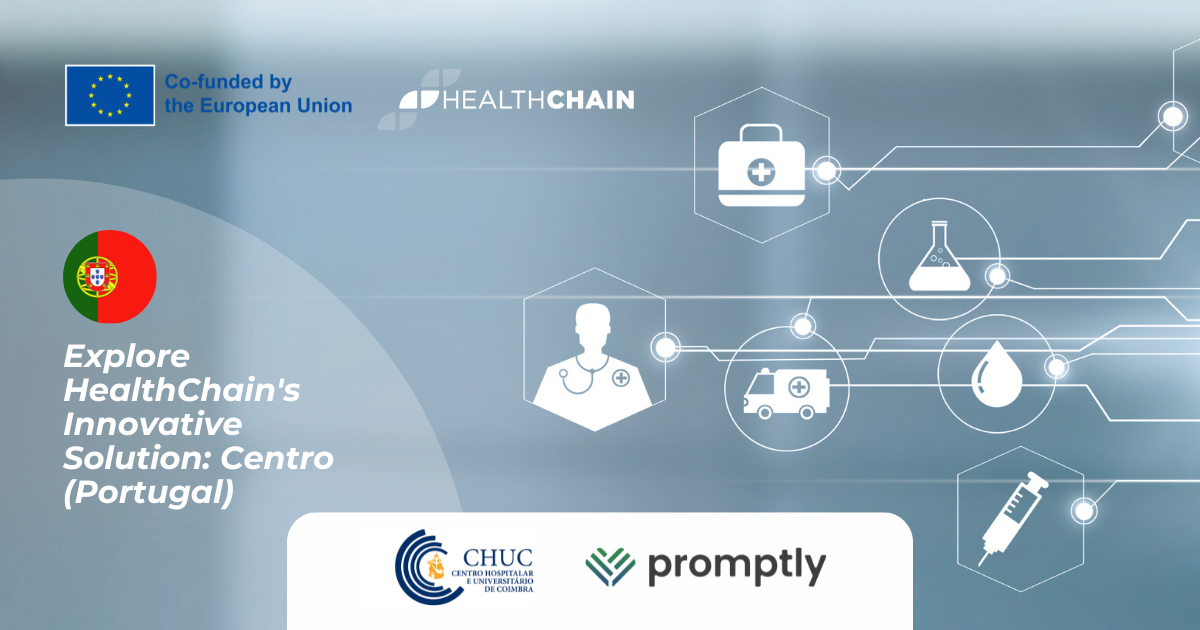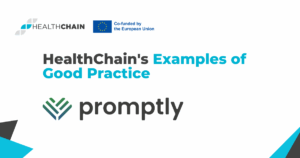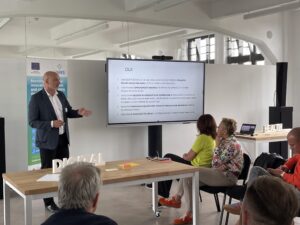Within the HealthChain project, healthcare organizations (HO), Centro Hospitalar e Universitário de Coimbra (CHUC) in Portugal act as challengers, presenting healthcare issues for resolution. IT company, represented by Promptly Health, act as solvers, crafting innovative solutions to address challenges identified by CHUC.
Currently, clinical data is scattered and presented descriptively, leading to manual and error-prone information searches, often relying on secondary databases like spreadsheets. Home patient monitoring, primarily conducted through telephone contact, lacks a systematic approach.
The primary aim of this collaboration is to enable the support of hospital practices through the implementation of a structured language for clinical records in both ophthalmology and cardiology services. This will facilitate continuous monitoring of patients at home and streamline the processes before, during, and after medical interventions.
The key challenge addressed by the Promptly involves developing a digital infrastructure for AI services to optimize patient engagement and monitoring.

Figure 1 – Ophthalmology team (Joaquim Murta, MD, PhD | Rufino Silva, MD, PhD | João Figueira, MD, PhD | João Pedro Marques, MD, PhD)
Specifically, in ophthalmology, solutions include the implementation of Ophthalmology Collect for the collection of Clinical Reported Outcomes (CROs) and Patient-Reported Outcome Measures (PROMs) related to ocular neovascularization. Additionally, Ophthalmology Natural Language Processing (NLP) is employed to structure free-text clinical notes through a questionnaire systematically gathering already structured data.

Figure 2 – 1 Intervention room | 2 Identification of the unit | 3 Example of a workstation
For cardiology services, an AI predictive model is being implemented to address the complexities of severe Aortic Stenosis, particularly in conjunction with Transcatheter Aortic Valve Implantation (TAVI) procedures.
These solutions aim to streamline data management, enhance patient monitoring, and ultimately deliver optimal care in alignment with modern healthcare practices.
The collaborative implementation of innovative solutions with the CHUC is expected to bring a multitude of benefits to both the CHUC and the Promptly.
The implementation of the solutions is currently in an advanced stage, with significant progress made across various key steps.
In the progression of Ophthalmology Collect, focusing on PROMs and CROs for ocular neovascularisation, several critical milestones have seamlessly unfolded. The alignment of clinical requirements has been successfully completed, ensuring the platform’s relevance. Subsequently, a customized data collection platform tailored to meet the identified needs of the HO has been developed. This development includes the creation and customization of a clinical dataset specific to the target condition. Furthermore, a demo environment, aligned with the defined clinical and functional requirements, has been successfully established. This iterative process has actively engaged clinicians through demonstration sessions, allowing them to familiarize themselves with the platform. Following this comprehensive development and validation phase, the platform seamlessly transitioned through a phased enrolment process. As a result, it is now live, fully operational, and accessible for use, marking a significant milestone in advancing healthcare solutions for ocular neovascularisation.
As for the Ophthalmology NLP and Cardiology AI Predictive Model solution development, key milestones have been achieved, signifying a robust progression in these innovative solutions: The initial phase involved an analysis of the dataset’s structure, paving the way for the design and implementation of Extract, Load, and Transformation (ETL) processes. Simultaneously, a comprehensive assessment unfolded concerning the global clinical pathway and requirements. This assessment, inclusive of both the medical team and patients, provided valuable insights into the intricacies and nuances of the clinical context.
As for next steps, for the Ophthalmology Collect solution, the immediate focus is on assessing results from the live platform collecting PROMs and CROs for ocular neovascularisation.
Regarding the Ophthalmology NLP and Cardiology AI Predictive Model solutions, the next steps involve accessing data from the healthcare organization’s infrastructure, harmonizing it into a common model, identifying, evaluating, and testing applicable algorithms. Subsequent steps include the training phase for the selected algorithm, its application for extracting and structuring medical notes, and finally, evaluating the algorithm’s real-life performance in both ophthalmology and cardiology contexts.
Author: Mafalda Oliveira, Delivery Specialist, Promptly Health.
Co-authors: Alberto Valejo, Project Manager, IPN; Cármen Nogueira & Patrícia Couceiro, Project Manager, CHUC.
Disclaimer: The HealthChain project is funded by the European Union. Views and opinions expressed are however those of the author(s) only and do not necessarily reflect those of the European Union or European Innovation Council and SMEs Executive Agency (EISMEA). Neither the European Union nor the granting authority can be held responsible for them.








